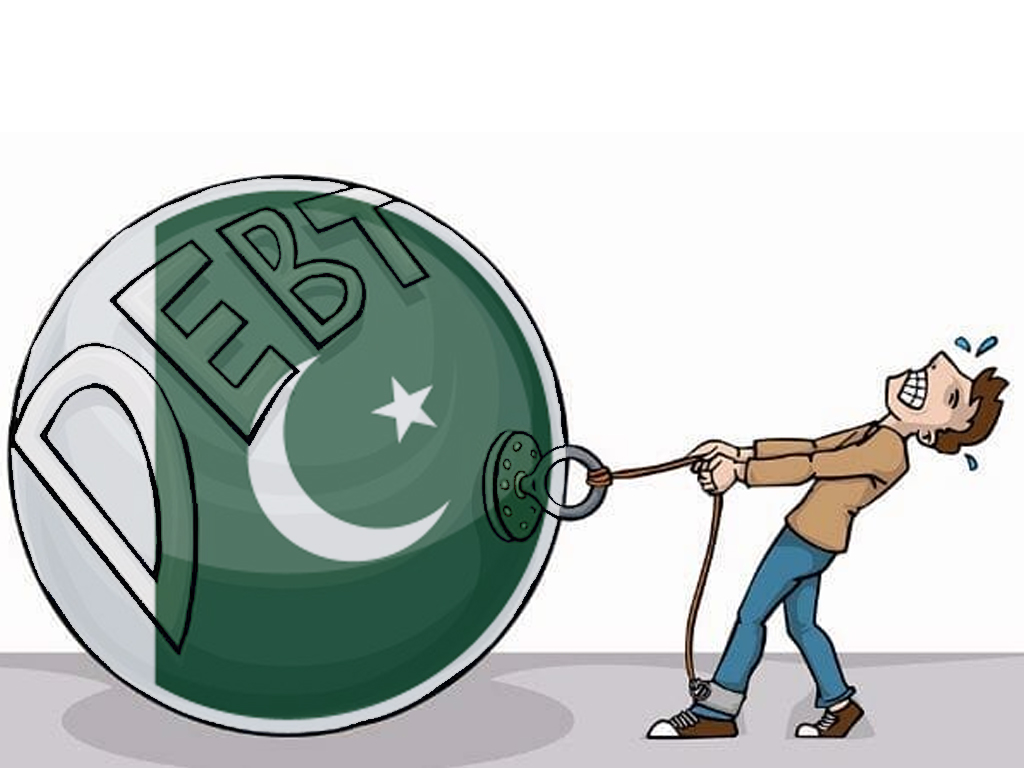The debt quagmire

It is shocking indeed to know that the country's overall debt and liabilities continue to grow at an alarming rate. In its latest debt and fiscal policy statement released by the Ministry of Finance, the government has conceded that the country's total debt and liabilities, which had amounted to about Rs 25.11 trillion at the end of June, 2017 had gone up by Rs 4.7 trillion to Rs 29.89 trillion at the end of FY18, have increased further to Rs 30.875 trillion by end September, 2018. So far as external debt and liabilities are concerned, these stood at dollar 96.733 billion at the close of September, 2018. During 2017-18, these liabilities posted a huge increase of dollar 11.86 billion to reach dollar 95.342 billion, exposing public portfolio debt of the country to huge exchange rate risk. Of the dollar 96.733 external debt and liabilities, dollar 65 billion comprises of long-term debt while over dollar 31 billion is in short-term debt. Around 32 percent of the total public debt stock is denominated in foreign currency.
The rapid accumulation in overall debt and liabilities stock during the recent years is of course a highly disturbing development because increasing part of the budget has to be earmarked for debt servicing, leaving little room for development expenditures which has diminished the prospects of growth in the coming years besides adversely affecting social sectors like health and education. For instance, interest payments during FY18 has amounted to Rs 1500 billion out of the total current expenditures of Rs 5854 billion. This item of expenditure is also the highest in the budget and almost equal to the total development expenditures of Rs 1584 billion during 2017-18. As for the reasons of burgeoning debt, the rising macroeconomic imbalances, the widening twin deficits in particular, have quickened the pace of debt accumulation. The contracting of foreign loans on floating interest rates may also pose challenges for future debt servicing when looked in the context of the rising global interest rates in the recent past, a very stressed external account position and the possibility of further depreciation of rupee in the exchange market, necessitating the allocation of higher rupee resources in the budget for debt servicing. Going forward, although the present government is very much aware of the situation and trying to take remedial measures, the situation in the external sector has improved only a little bit and continues to be precarious in the sense that the huge current account deficit is still there and being financed through bilateral loans and floating of bonds which would result in higher debt stock and debt servicing in foreign exchange in future. Similar is the position with the domestic debt. Overall fiscal deficit is likely to be higher than the target prescribed for FY19. The performance of many Public Sector Enterprises (PSEs) also deteriorated over the past many years, demanding extra allocations from the budget. The government has taken the initiative to set up "Sarmaya-e-Pakistan Holding Ltd (SPHL)" to get the PSEs out of the administrative control of various ministries and revive loss-making PSEs. These kind of initiatives do not, however, appear to be sufficient to either contain or reduce the outstanding debt and debt servicing of the government. There could be no argument that much more needs to be done to check the mounting level of debt. Otherwise, the country's options to devote necessary resources to more important items of expenditure would be further limited and our future generations will become hostage to our current profligacy.
It needs to be pointed out, however, that some initiatives were taken in the past to check the tendency of rising debt. The Fiscal Responsibility and Debt Limitation (FRDL) Act, 2005 was passed after a great deal of discussion in parliament and with very high hopes. It was specifically provided in the Act to reduce revenue deficit to nil not later than by 30th June, 2008 and thereafter maintain a revenue surplus, and ensure in every financial year upto June, 2013 a reduction in total public debt of not less than two and a half percent of the estimated GDP. The government could, however, depart from these provisions in case of unforeseen demands on the finances due to national security or natural calamity as determined by the National Assembly. Although there is no ambiguity in the principles and provisions of the FRDL Act meant specifically for good housekeeping, it has been violated with impunity by successive governments. It could be better for this government to invoke and discuss the provisions of this Act in the National Assembly so that the opposition parties could be dissuaded from raising a hue and cry if the authorities decide to reduce the overall debt by measures which are certain to be harsh.





















Comments
Comments are closed.